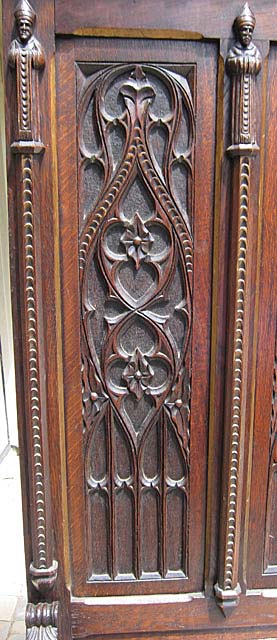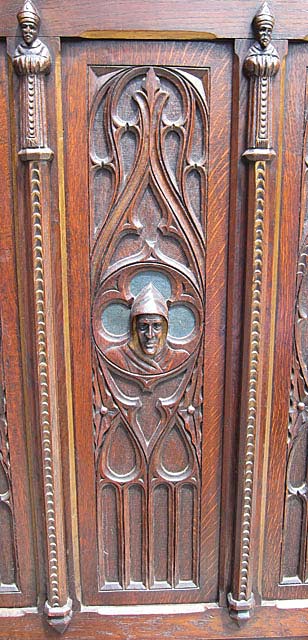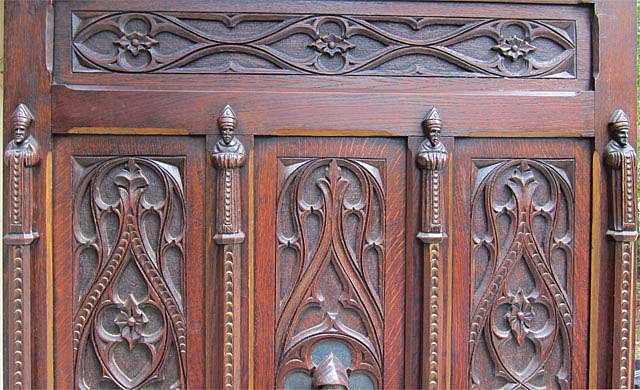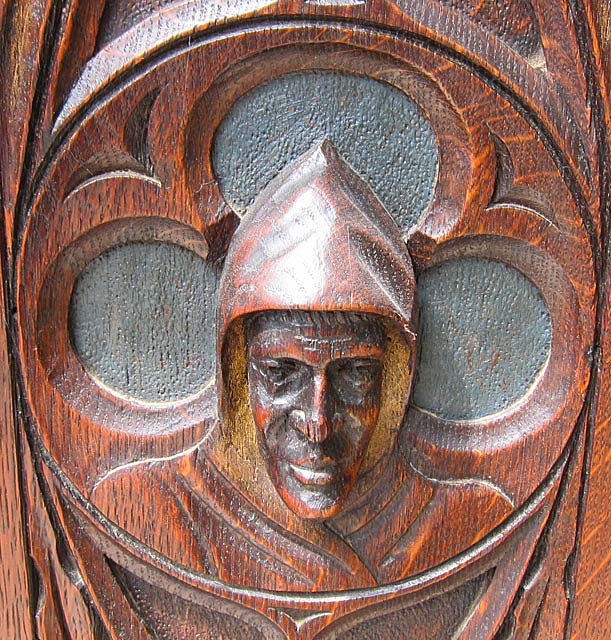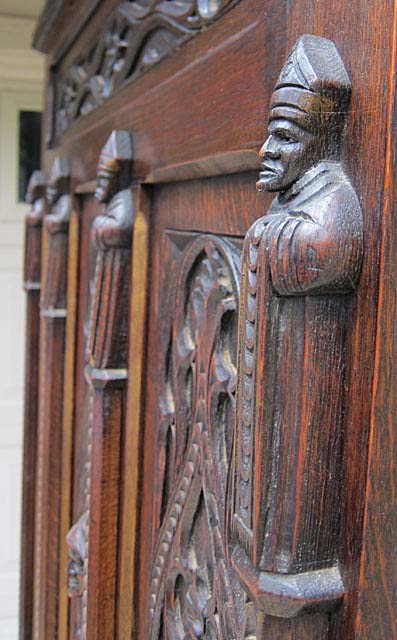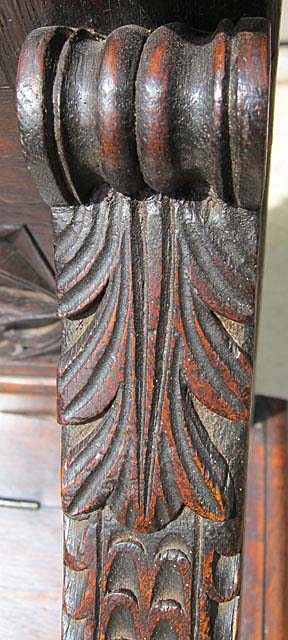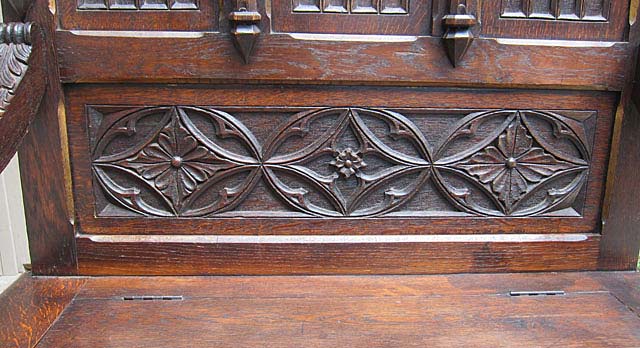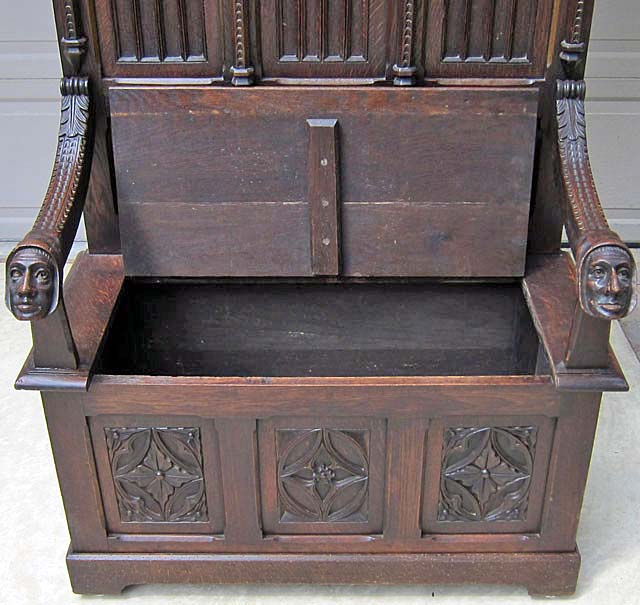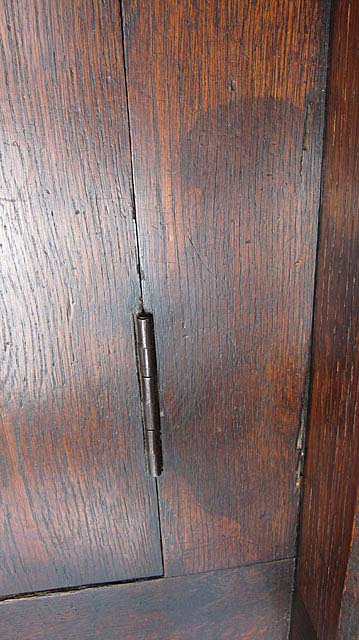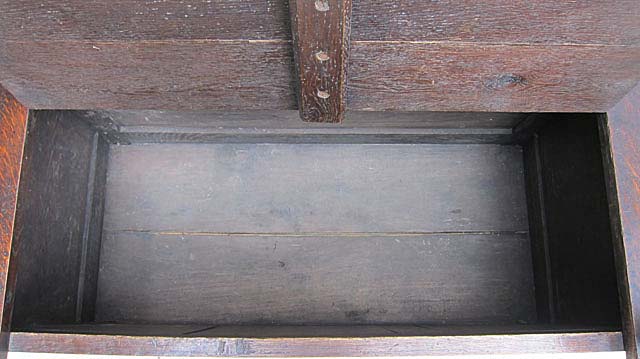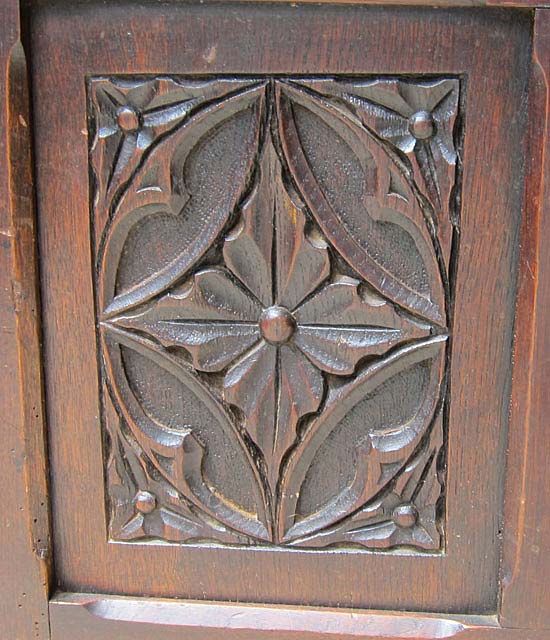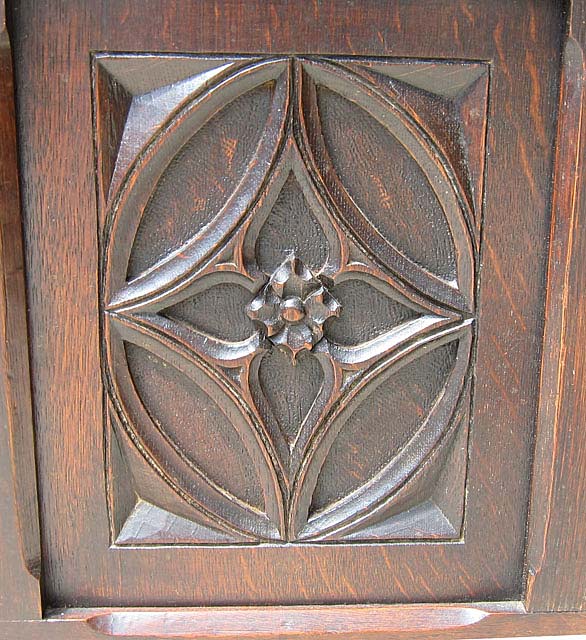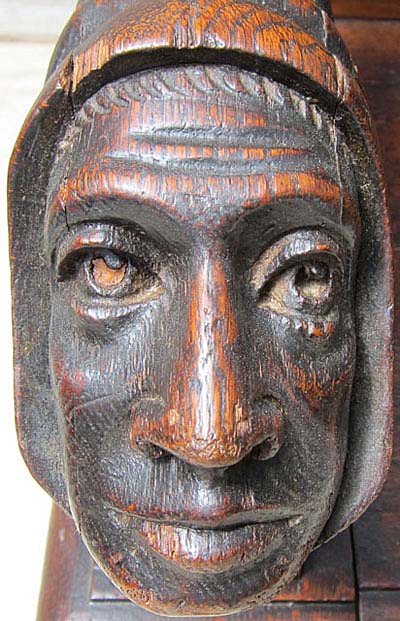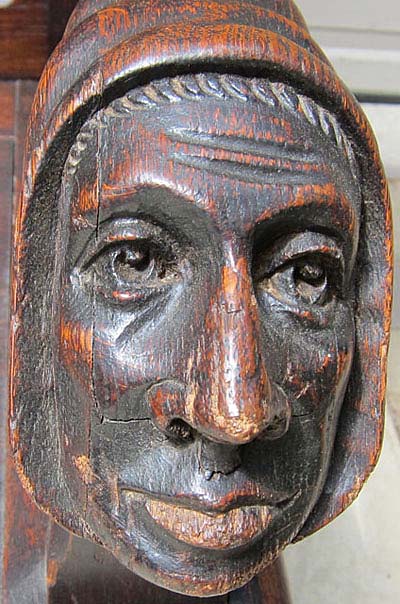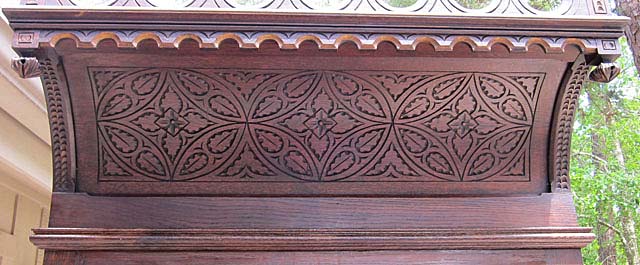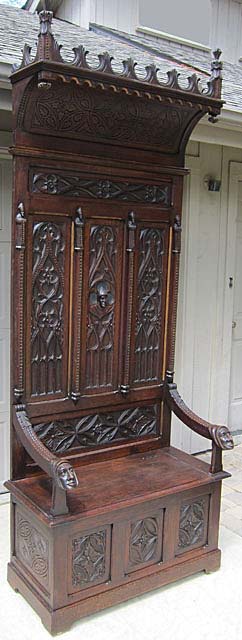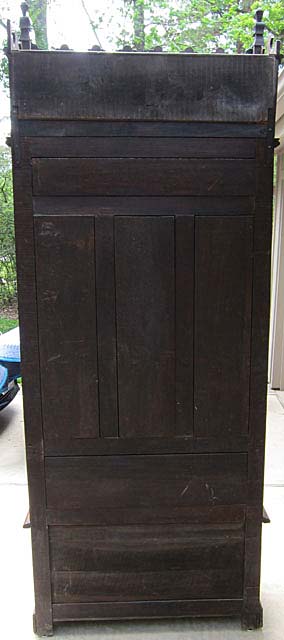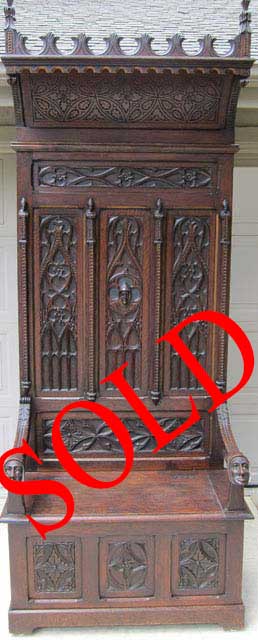
This Gothic style bench is a stunner, both in terms of sheer scale and exquisite workmanship. In fact, it was so tall we photographed it outside our studio in order to be able to capture its grandeur up to the tip-top of the toupies or finials. Fortunately for us and for its next owner, it comes apart for ease of shipping.
It owes its overall architectural design to the chaise cathèdre or bishop's throne used in cathedrals. However it also owes its heritage to the typical bench in the Gothic style that is shorter in stature and wider, typically designed to seat between two and four persons. Typical of any bench's origins as a chest with a high back and arms, this one has a seat that flips up to reveal a case for storage, including the traditional pillows used to ease the strain of sitting for long periods on a hard surface.
In chateaus, the vestibules or entry areas were typically ringed with benches which were heavily carved and often covered in pillows made of luxurious fabrics or draped with tapestries or carpets. Benches were also used in the bed chamber, frequently near the fire, in order to block drafts and increase warmth. A bench remarkably similar to this one is depicted in just such a vignette in the illustration of a 13th century bedroom on Plate XIII of Volume I of Viollet-le-Duc's Dictionnaire Raisonné du Mobilier. In the main hall of chateaus, a high-backed bench on a dais or low platform served as the seat of authority for the châtelain or owner in dealings with his tenants and vassals (see Figure 2 on page 39 of the Dictionnaire). Benches were also used at tables for meals in the main hall (see Figure 6 on page 97 of the Dictionnaire).
An intriguing aspect of this bench is the paint visible on several of the elements, providing not only an interesting decorative treatment but a link to an aspect of Gothic design that all but the most intrepid academics have neglected. Like Greek statuary and architecture of the Golden Age, medieval interiors and decorative pieces were also painted. With the exception of the interior of the Sainte Chapelle in Paris with its vivid blues, reds and golds, it is rare to see polychromatic treatment of anything from the Middle Ages, much less the 19th century revival of this style. See the detailed photos, below, of the figure in the central portion of the back panels. In this case, the coloration is subtle and serves to highlight the central figure depicted from the shoulders up in a hooded cloak, eyes down-cast. The figure protrudes enough from the background to make resting one's back on it potentially uncomfortable, but the addition of pillows (as used in the Middle Ages) this should not be a problem. Even without them, the width of the bench allows for shifting to either side of this figure for maximum comfort.
In overall design, the bench reflects the 19th century standard design incorporating tracery or fenestrage with figures, especially the hooded ones at the end of the armrests, which peer upward at anyone contemplating a sit-down. In keeping with beliefs of that time that furniture of the Middle Ages was dark in color, the oak of this bench is a rich dark shade with a hint of a reddish patina. As shown in a photo, below, of the lower left part, there is a slight discoloration on the seat.
Each of the three tall, vertical panels comprising the central portion of the back is adapted from the architecture of Gothic cathedrals with lancet arches supporting a mouchette or elliptical shape broken into further interior lobes including elongated quatrefoils with small flowers at their center. Framing these panels are slender columns, each topped by an intricately carved figure of a bishop whose arms concealed in the sleeves of his long robe. In this sense, the stylistic link to the tall, narrow chaise cathèdre is preserved.
Above those panels is a horizontal one incorporating three elliptical shapes with the same floral motif at the center. Below these panels is another unifying theme for the piece -- smaller rectangular panels framing ovals in which either a small or large flower is centered. These are flipped perpendicularly and isolated into separate panels to decorate the area below the seat.
Topping it all is a curved canopy with intricately incised carving comprised of leaves with serrated edges around the unifying motif of the central flower. The canopy has toupies on either side, united by a typical trim of undulating semicircles.
The decorative detail of this bench is a testament to the carver's art in oak, that hardest of 19th century woods for sculpting. For example, the detailed scale pattern of the armrest and the scrolled acanthus leaf where it joins to the bank of the bench are especially well executed.
Reference
Ader-Tajan, Collection Bruno Perrier Haute Epoque (Catalog for Sale at Auction on April 6, 1992 at the Hôtel Drouot, Paris); Boccador, Jacqueline, Le Mobilier Français du Moyen Age à la Renaissance (Editions d'Art Monelle Hayot, Saint-Just-en-Chaussée, 1988); Thirion, Jacques, Le Mobilier du Moyen Age et de la Renaissance en France (Editions Faton, Dijon, 1998); Viollet-le-Duc, Eugène, Le Mobilier Médiéval (Georges Bernage, editor) (Editions Heimdal, 2003).
Uses
This throne-style bench is ideal for an entryway and any other space with a very high ceiling. It can also anchor a dining room to seat the host or hostess. In outstanding condition, it is ready for centuries more of sitting and of commanding pride of place.
